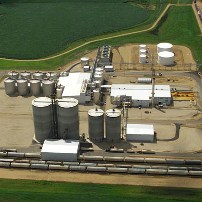US ethanol maker in bad weather

VeraSun Energy, US second largest ethanol producer has secured enough money to keep it from closing its doors, the company revealed, but more is needed.
VeraSun filed paperwork in a Delaware federal bankruptcy court Monday that
further detailed the company’s precarious financial situation and outlined its
plan for the months ahead.
Yesterday, the New York Stock Exchange halted
trading on VeraSun’s stock as the company’s common shares dropped 53% to 23
cents a share.
This decision came in response to VeraSun’s Chapter 11
bankruptcy protection filing late Friday.
To continue operations, lawyers
for VeraSun said in the court filings, the company preliminarily has tapped at
least $25 million in interim financing from existing creditors and is seeking up
to $190 million in working capital while it reorganizes.
Analysts are
unsure of whether VeraSun’s troubles represent an ominous sign for the ethanol
industry.
Monday’s events marked the latest setbacks for VeraSun, which
had been on a fast growth track since going public only two years ago. In
December, VeraSun’s stock traded at a 52-week high of about $17 a
share.
The company, founded in 2001, was posting quarterly profits and
building plants across the Midwest to keep up with the growing demand for
ethanol.
But in the past few months, escalating corn prices began cutting
into ethanol producers’ profits. Many turned to hedging in a bid to control
costs.
Disastrous hedging
Under hedging, ethanol producers
banked on meeting future corn production needs by buying the product immediately
and locking in prices to avoid volatile price swings in the market.
For
VeraSun, that hedging proved disastrous because corn prices began falling after
it had contracts locking the company in at the higher prices.
After
VeraSun locked into prices for its feedstock for the third quarter, corn went
into a sharp decline from almost $8 per bushel to a low of less than $5 per
bushel in mid-August.
VeraSun owes more than 1,000 creditors $1.9
billion; it has assets of $3.45 billion.
The ethanol producer owns 16
plants in eight states that can produce 1.64 billion gallons of ethanol a year,
or about 15% of the domestic supply.
For regular updates on feed news subscribe here to our free
newsletter











